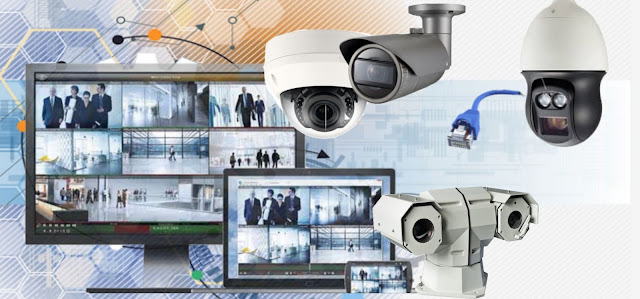Strengthening Warehouse Security: Best Practices and Tips for Video Surveillance
Introduction:
Have you ever wondered how to keep a watchful eye on your warehouse, safeguarding it against threats, theft, and unforeseen incidents, all while ensuring the smooth flow of operations? If you're a business owner or manager, the safety and security of your warehouse is likely a top concern. With valuable assets on the line, finding the right solution is essential.
That's where video surveillance steps in as a formidable ally. In this blog, we'll explore into the world of video surveillance for warehouses, addressing the pain points that business owners often encounter. From protecting assets to enhancing operational efficiency, we'll provide answers and actionable insights to help you secure your warehouse effectively.
1. Strategic Camera Placement:
Strategically position cameras to cover critical areas, including entry and exit points, loading docks, and high-value storage zones. Ensure camera angles provide clear visibility without blind spots.
2. High-Resolution Cameras:
Invest in high-resolution cameras to capture fine details, aiding in the identification of potential security threats or incidents. Consider utilising panoramic cameras for wide-area coverage.
3. Adequate Lighting:
Ensure proper lighting in surveillance areas to enhance video quality, especially during nighttime or low-light conditions. Motion-activated lighting can be an energy-efficient choice.
4. Remote Accessibility:
Implement systems that offer remote access to live feeds and recorded footage. This enables real-time monitoring and response from anywhere. Cloud-based storage solutions provide flexibility and scalability.
5. Integration with Alarm Systems:
Integrate video surveillance with alarm systems to trigger video recording when an alarm is activated, providing context for incidents. This enhances the overall security ecosystem.
6. Analytics and Alerts:
Utilise video analytics to detect unusual activities, such as unauthorised access or motion in restricted areas. Set up alerts to notify security personnel or management immediately.
7. Regular Maintenance:
Establish a routine maintenance schedule for cameras and recording equipment to ensure optimal performance. Periodic camera calibration can maintain image quality.
8. Data Security:
Implement robust cybersecurity measures to protect video data from unauthorised access or breaches. Encrypt stored footage and use strong access controls.
9. Compliance with Regulations:
Stay informed about industry regulations and compliance requirements related to video surveillance in warehouses. Ensure that your system adheres to privacy and data protection laws.
10. Employee Training:
Train warehouse staff on the proper use of the Warehouse Security System and how to respond to security incidents. Foster a culture of security awareness.
11. Regular Review and Analysis:
Conduct regular reviews of recorded footage to identify trends, vulnerabilities, or areas for improvement. Use past incidents as learning opportunities.
12. Scalability:
Design your Video Surveillance for a warehouse with scalability in mind to accommodate the evolving needs of your warehouse. Plan for future expansions or technology upgrades.
Conclusion:
In the world of warehousing, safeguarding assets and ensuring the safety of personnel are paramount. Implementing video surveillance best practices and following these essential tips not only fortifies security but also brings peace of mind. A well-designed and maintained video surveillance system can act as an invaluable ally in protecting your warehouse and its valuable contents.


Comments
Post a Comment